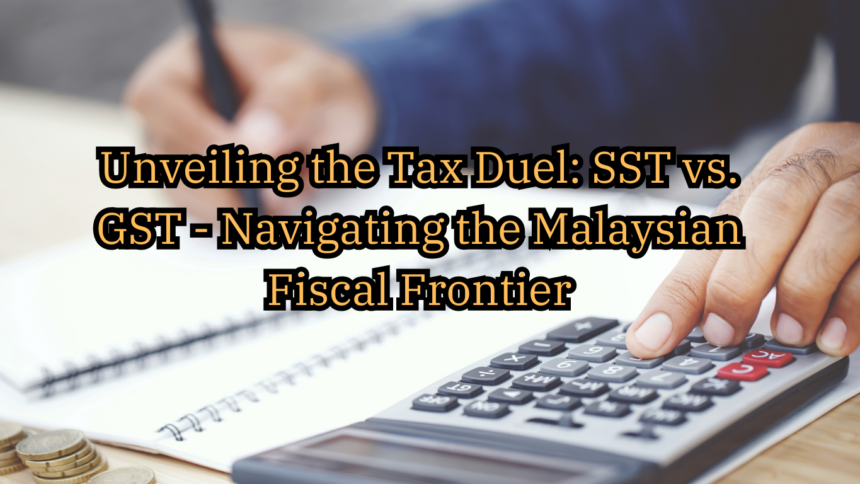Taxation, the heartbeat of any nation’s economy, plays a pivotal role in shaping fiscal policies and revenue generation. In the Malaysian tax landscape, two acronyms stand out: SST (Sales and Services Tax) and GST (Goods and Services Tax). Let’s dive into the tax duel and uncover the nuances that make them distinct in this fiscal showdown.
The Rise of GST:
In 2015, Malaysia bid farewell to the age-old SST and embraced the more modern GST system. Goods and Services Tax (GST) was a consumption tax levied on the supply of goods and services at each stage of the production chain. It aimed to broaden the tax base and reduce the tax burden on manufacturers.
The Grand Comeback of SST:
However, the honeymoon with GST was short-lived. In 2018, Malaysia reverted to the Sales and Services Tax (SST) system, bidding adieu to GST. The reasons behind this tax tango were varied, including public sentiment and concerns about the regressive impact of GST on lower-income groups.
The Battle of Definitions:
- SST (Sales and Services Tax): SST is a dual tax system that imposes taxes on selected goods at the manufacturing stage (Sales Tax) and on specified services at the consumption stage (Service Tax). The rates can vary depending on the category of goods and services.
- GST (Goods and Services Tax): GST, on the other hand, is a value-added tax that is imposed at every stage of the supply chain. It covers a broader spectrum of goods and services and is designed to be more comprehensive, capturing a wider range of economic activities.
The Scope of Taxation:
- SST: SST has a narrower scope, focusing on specific goods and services. It typically targets manufactured goods and certain designated services, allowing for a more targeted approach to taxation.
- GST: GST casts a wider net, encompassing a broader array of goods and services. This inclusivity aims to distribute the tax burden more evenly across various economic activities.
Consumer Impact:
- SST: Consumers might find relief in SST, especially on essential goods and services, as the taxation is more specific and targeted. However, the impact on high-value items might be more pronounced.
- GST: GST, while aiming for a fairer distribution of the tax burden, had the potential to affect consumers across the board. The cascading effect on prices of goods and services was a point of contention.
Administrative Complexity:
- SST: SST is often deemed simpler to administer, given its more targeted approach. The focus on specific goods and services streamlines the taxation process.
- GST: GST, with its multi-stage taxation and extensive coverage, introduced a level of administrative complexity that some found challenging to navigate.
Conclusion:
As the tax pendulum swung from GST back to SST, Malaysia underwent a fiscal transition that sparked debates and discussions. SST, with its targeted approach, has found favor in some quarters for its perceived simplicity and direct impact on specific sectors. The GST era, while short-lived, brought a different perspective, emphasizing a broader tax base.
In this fiscal tug-of-war, the key lies in finding a delicate balance between a comprehensive tax system that ensures sufficient revenue and a system that doesn’t unduly burden the average consumer. The SST vs. GST saga is a testament to the ever-evolving nature of fiscal policies, reflecting the ongoing quest to strike the right chord in the melody of taxation. As Malaysia continues its economic journey, the echoes of this tax duel resonate in the halls of fiscal decision-making.







